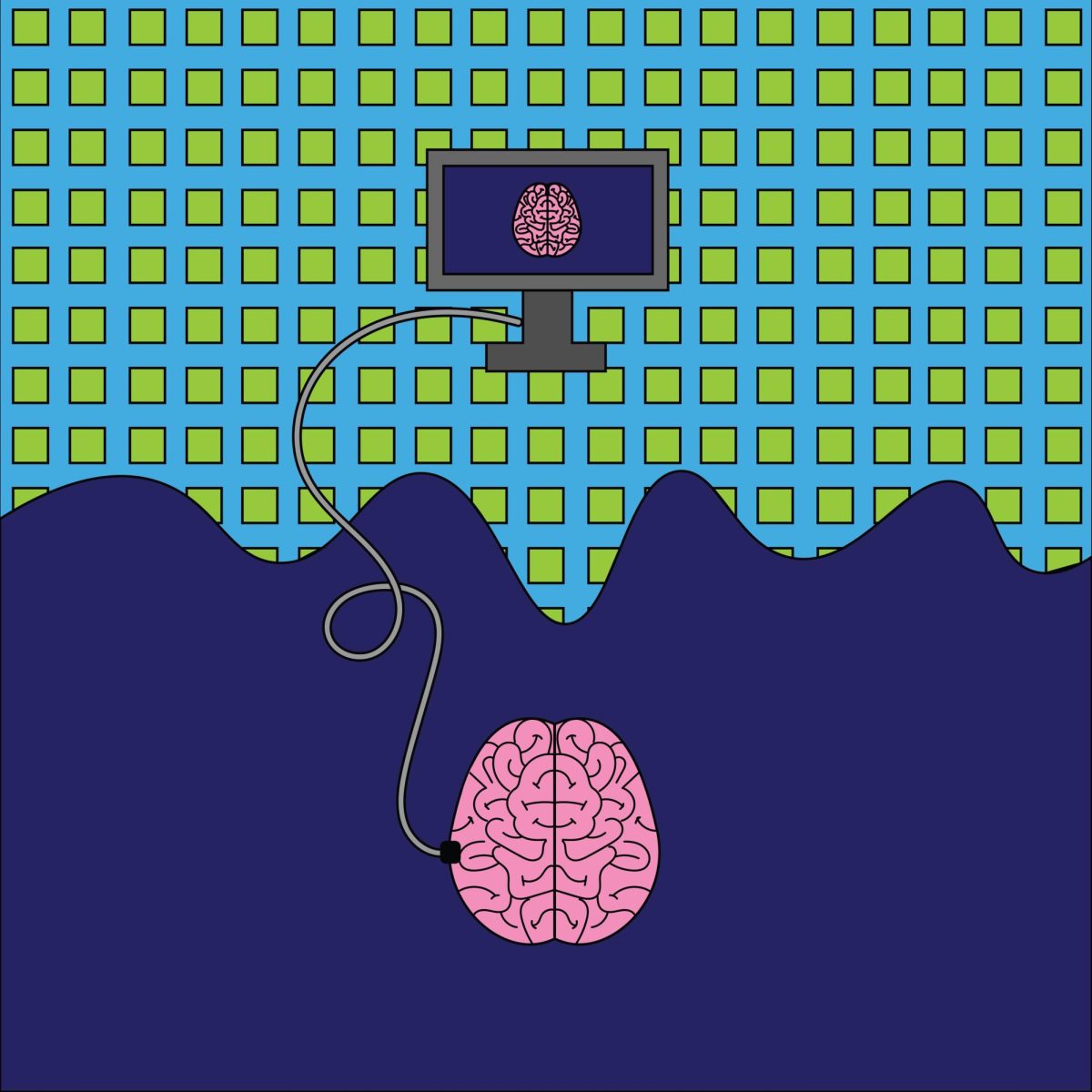Like many freshmen, Li Yiyang attended her first University of Wisconsin football game earlier this fall, although for Yiyang, this was her first American football game ever.
“It was exciting because all people were standing on the benches and dancing and celebrating or cheering for the team,” Yiyang said. “I liked the atmosphere but I couldn’t understand what was going on.”
Yiyang is from the Chinese city of Nanjing, and hopes to study landscape architecture at UW. She said she decided to study in America because she wanted experience abroad and the United States is known across the world for having good universities.
“[The] US is the leader of the world. It has the best resources so I came here,” Yiyang said.
She added she found UW through searching online, and was impressed by the university’s website and pictures. Yiyang said the culture shock has been minimal so far, and like most college students, her main concerns are learning how to balance studying, sleeping and social activities.
Like Yiyang, freshman Sheila Pandji discovered UW by searching the web. She said she liked the pictures featured on the website, as well as the fact Madison is known as a “college town.” Coming from Jakarta, a city of eight million people in Indonesia, to Madison, with a population of 225,000, however, was quite a culture shock.
Pandji is here on a scholarship she won through the Indonesian government that will pay for her to attend any university abroad she gets accepted to. Like Yiyang, Pandji said she knew she wanted to study in America because of the quality of higher education in this country.
According to a study from UW’s Center for First Year Experience, about a third of international students taking the survey reported the university’s international rankings and reputation are the main reasons they chose to study here. The opportunity to study in a specific department on campus came in a close third.
Mexican student Eduardo Rodriguez agreed the university’s reputation played a role in why he decided to study abroad here for a semester, however he did admit UW’s reputation in another area also influenced his decision.
“What I read about the city was that it wasn’t that big nor that small. [I could] get the real American college experience,” Rodriguez said. ” [UW’s] a top rated party school. That was a plus.”
Resources for International Students
Pandji, Yiyang and Rodriguez are all involved in the Building Relationships in Diverse Global Environments group, which is a branch of UW’s International Student Services. The BRIDGE program pairs an international student with an American student and helps plan activities and events the pair can participate in.
“I realized that this campus has a full range of opportunities and this campus life is so diverse,” Pandji said. “I want to get involved in as many organizations as I can and try to get the Wisconsin experience.”
The goal of the program is to help build relationships between international and American students on campus, Katherine Tellock, BRIDGE student coordinator, said. There are currently 102 students participating in the program, and admittance can be quite competitive.
“Most of the Americans in the program are people who’ve had international experience already…and know how hard it is,” Tellock said. “Universities outside the US typically don’t have the athletics like we do…that kind of stuff is really a big part of our campus and [international students] might not have ever done that before and they might not know how to get invited to those parties and how to get tickets to the games.”
All of the BRIDGE students agreed ISS does a good job of informing international students about opportunities to get involved on campus, some of which include volunteer and peer mentoring programs.
Although BRIDGE has provided them with an outlet for meeting students and participating in activities on campus, all three said making friends with American students has been challenging. UW students are generally friendly, Rodriguez said, but most do not express an interest in getting to know international students outside of class.
“The problem is in everyday social life. Because my English is limited I can’t really connect to the US students when they engage in conversation,” Pandji added.
Differences in teaching styles
Although all three of the BRIDGE students said they have not experienced a large amount of culture shock so far, there have been differences in student and academic life they have had to adjust to since leaving their home countries.
Pandji said the American students in her classes are more “open and expressive” and tend to be more talkative than Indonesian students.
Yiyang echoed her statements, and said the relationship between professors and students here is something she really likes about the university.
“Most universities in the US, you have more academic freedom than in universities in China,” Yiyang said. “[Students] challenge teachers in class and raise questions. In China there are some limitations for that free atmosphere.”
Yiyang added she also likes that students here can take classes in a variety of different fields and departments, unlike in China where classes have to be more closely related to a student’s major. Professors here also have different ways to teach students, including out-of-class research groups and activities, which can give students more hands-on experience with what they are learning than in her home country
“Here in [the] US there are more freedoms. We could parade on the street [here], but in China it’s so crowded… and there may be government censorship,” Yiyang said. “Capitalism means people get more freedom and liberty and equality.”
Linda Brideau, French dissertator in the Department of French and Spanish, said she is impressed by the quality of education UW offers, and by the education available in public universities in the U.S. in general. In France, public universities are seen as second-choice compared to the more expensive, private universities.
Part of the reason for this, Brideau said, is that all French students are automatically accepted to any public university immediately after graduating high school. They can go to school for free, however the education they receive is very generalized.
“The problem is unless you want to become a teacher for a topic you’re studying, you don’t really have any professional outlet,” Brideau said. “I’m not saying no one will find a job out of a French university, but at the same time you will probably have to do something else to compensate for the fact it’s so general.”
Brideau said UW offers more academic and professional opportunities than French universities, however she does appreciate the free education France’s system offers for students who may not be able to afford a private, specialized school.
In addition to the academic differences, Brideau said she has had to adjust to the American pace of life, which moves a lot faster than what she is used to.
“When I moved here I came from an extremely small village of 400 people..spontaneity is everything,” Brideau said. “Everything [here] is so scheduled, so organized…no one ever stops at my house for coffee.”
Rodriguez said the social scene on campus is quite different than in Mexico, as most Mexican students dress up and go out to clubs instead of hanging out in bars. Pre-gaming, he added, is universal.
Rodriguez added one of the more negative things he has had to deal with at UW are stereotypes about Mexicans, and said he has gone to parties with other international students where people have been critical of the fact he is from Mexico and not a European country.
Growing numbers on campus
Currently there are 5,082 international students on campus, including degree-seeking and study abroad students, as well as undergraduate, graduate and professional students. This number has grown by over 5 percent from last year at this time and 10 percent from two years ago.
By far, the largest number of international students come from China, with 1,528 on campus this fall. South Korea is a distant second, with 827 students.
UW International Admissions Officer Emilie Dickson said the university has recently started placing more emphasis on recruiting international students, especially with UW Chancellor Biddy Martin’s trip to China last spring. Martin’s second trip to China is scheduled for next month.
“There’s a China initiative and [Martin] has stated that she wants to see more students from China,” Dickson said. “[There is] also a booming market there…the demand far outpaces the supply of universities in China.”
Dickson said the main tools UW uses to recruit international students are their website and word-of-mouth, especially from international alumni.
With the greater importance placed on attracting these students, however, the university has started to branch out into other recruitment methods. Dickson said she leaves on Thursday for the school’s first recruitment trip to talk to high school students in China and Taiwan.
Although most international students already recognize names like “Harvard” and “Yale,” Dickson said they hope to increase UW’s name recognition abroad through these types of trips. Cost of attending UW compared to the cost of a private university is also a huge draw for international students.
The tuition for international students for the current academic year is $24,000, however with living expenses the total cost is estimated at almost $43,000. Wisconsin and Minnesota residents are only paying about $21,000-$23,000 with tuition and expenses for this academic year, however this number jumps up to almost $38,000 for non-residents.
If an international student wishes to study at UW, they are required to show documentation from their bank verifying they have the funds available to pay for all of the costs of one academic year. If not, UW cannot send them documents to get their student visa. International students are also required to sign up for the university’s Student Health Insurance Plan.












